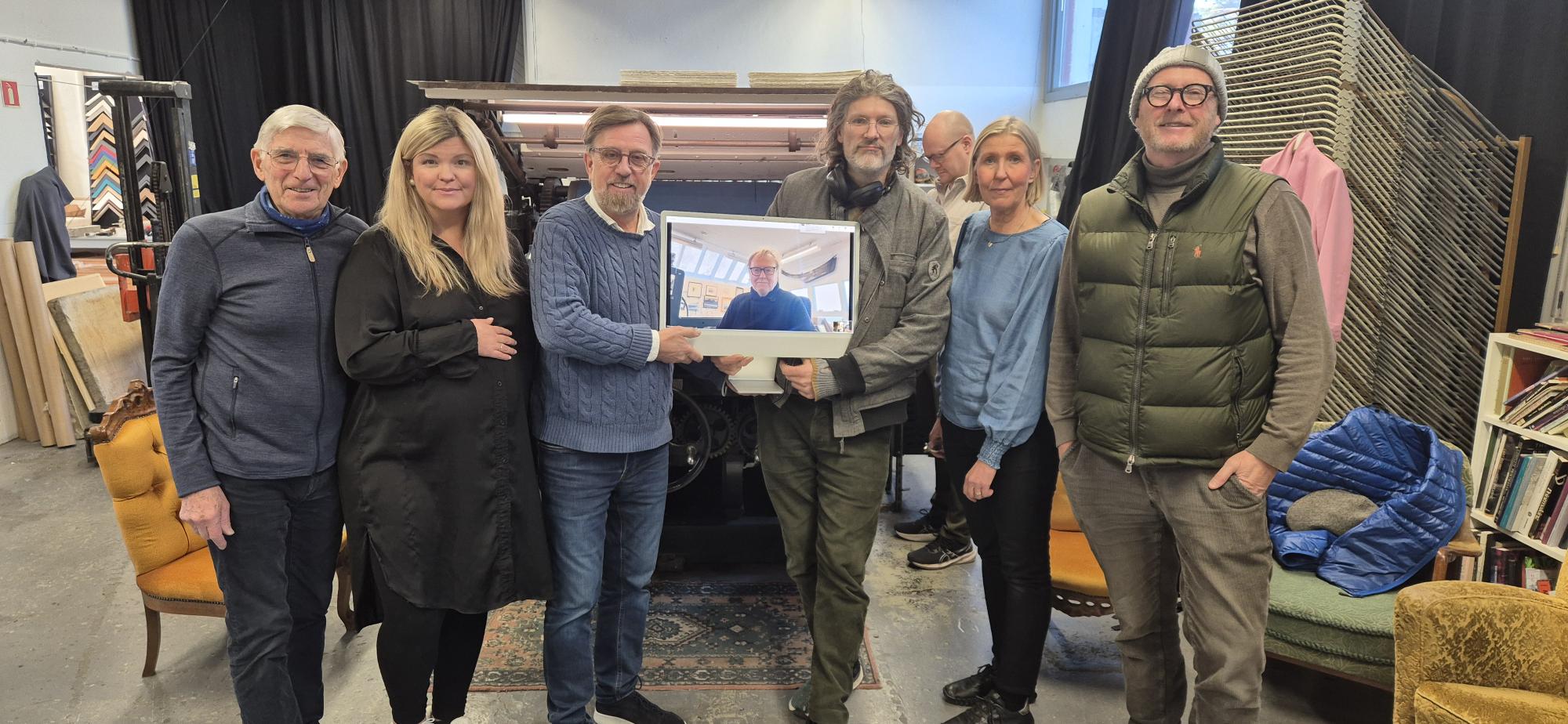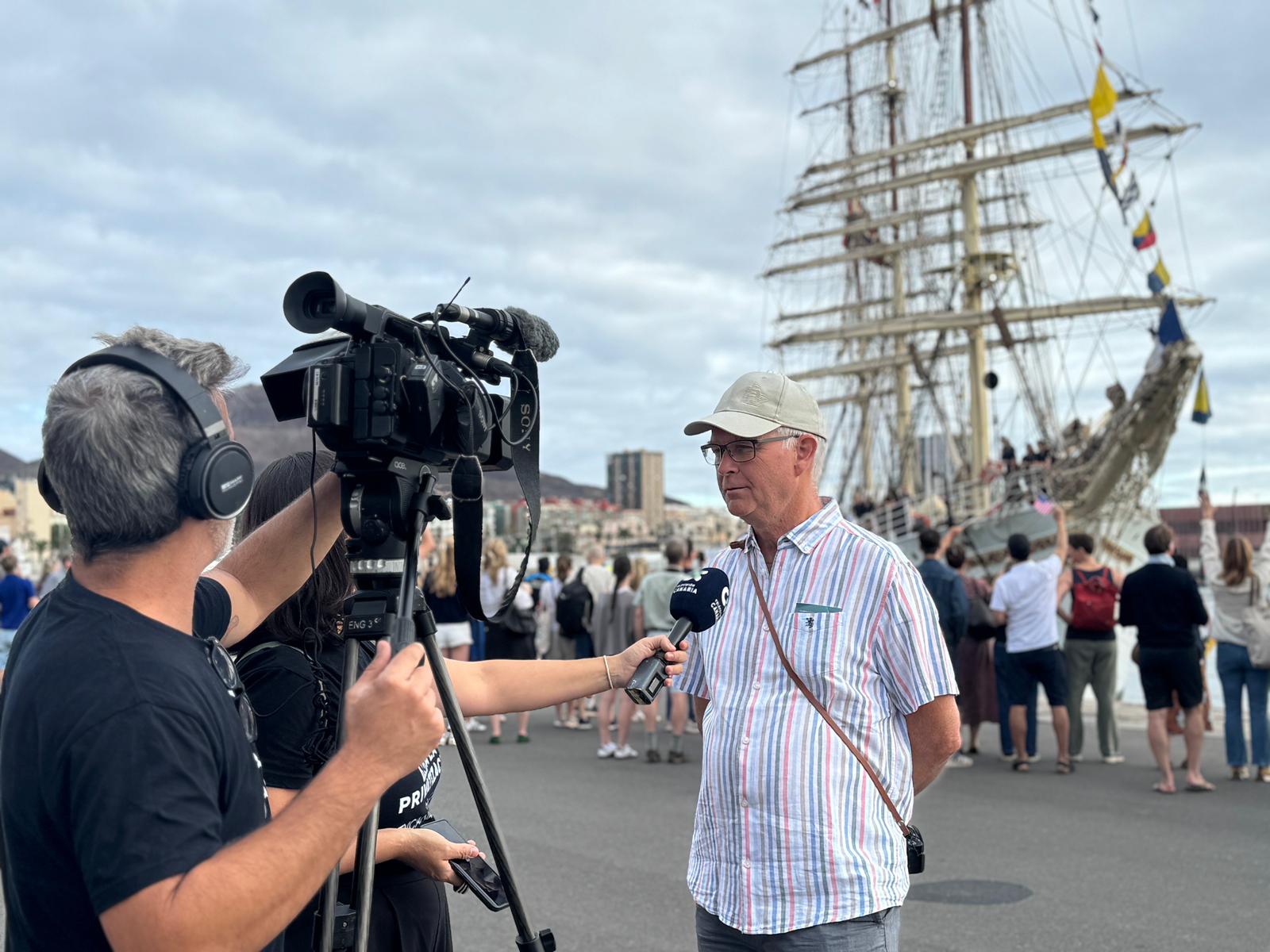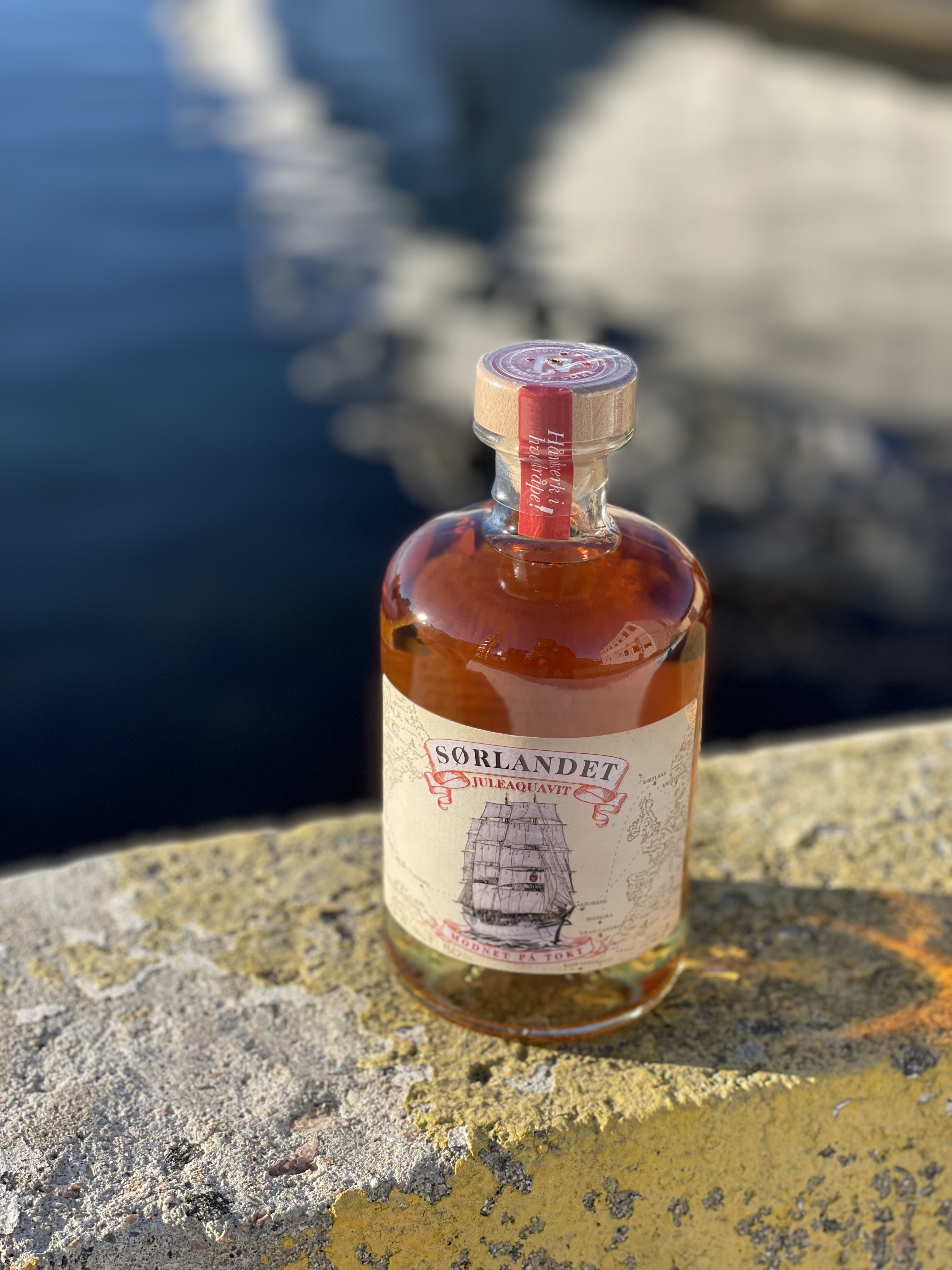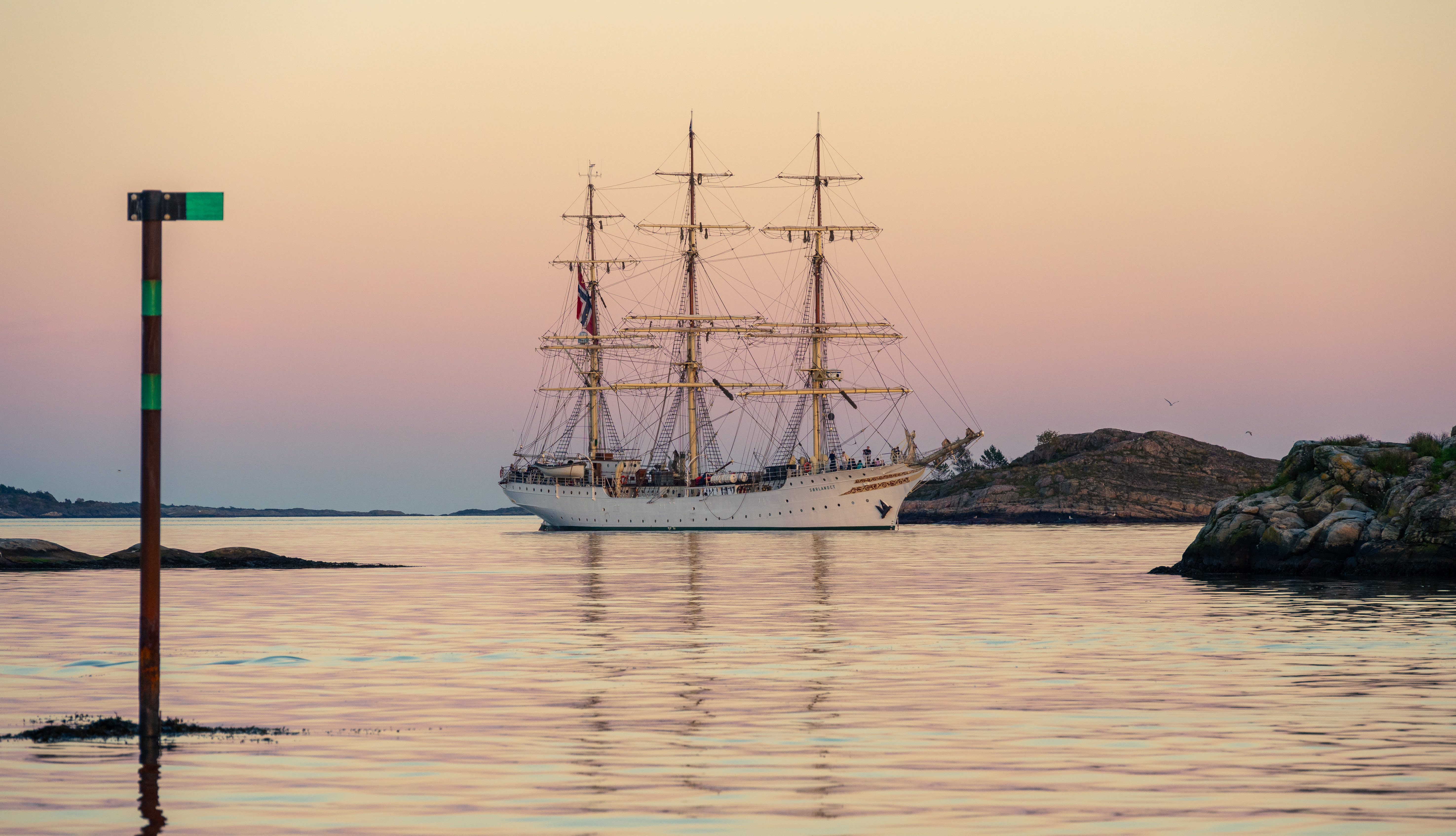They came down from the rig and manned our fleet
"The first school ship cohorts came down from the rigging and sailed out as deck boys, young men and cooks on steamboats and tankers and were happy for the hire. Some went to the top of the bridge and became captains and higher ship officers in the merchant fleet and in our Royal Navy ... »This is what it says in some reflections from one of the boys who was on board in his early 30s, one of the many with a thirst for adventure in the blood and a desire for the challenges of sea life. We allow ourselves here to browse a little in the oldest annual reports to give some glimpses of what was recorded of impressions and thoughts after the end of the season, otherwise in the language that was used. In these years visited Sørlandet a number of ports in the Baltic Sea, North Sea and Skagerak.
1928:
From the captain's report to the shipping company, it emerges that skib and manliness everywhere, where they have been in the summer's race, is received with the utmost attentiveness and hospitality. Especially in Kjøbenhavn, Helsinki and Bergen.
"In Kjøbenhavn," he says, "the Norwegian colony with Minister Huitfeldt and Consul General Koren took him off os and gave us all the nogen minderike dage. Likesaa we had about 50 of the colony members on board for tea and refreshments.
In Helsinki, we were also received with the greatest hospitality of Consul Hansen. The whole besætningen was invited to his country house out in skjærgaarden, where we spent a wonderful day in the most beautiful surroundings. The consul also carried out all skibets business for free.
In Bergen, all the school skibs had sat hinanden conference the first days of August. Here the boys had the opportunity to see the national exhibition, they participated in kaproing with the other school skiers boys, gathered for a party aboard Bergen's school skib "Statsraad Lehmkuhl", likesaa in "The Norwegian Embroidery Circuit paa Havet". "The staff was very friendly and helpful."
On September 20th, the aarligevisning took place at Kristiansand's harbour. During a 3-hour sea trip to 8 n. miles outside Oksø, the approximately 30 invited occasions for that to see, whatd the students in the short time of 5 maaneds had acquired from the faro, order, disciplin and the quickness of the turn. The students' sea manse works are made. Everything was the undivided beet of the many seafarers.
At the same dinner, the boys' paarørists were invited to be present at the handout of the burdens and to receive the Bible, which the boys according to the statutes at the time of departure should be handed over.
In 1929, the captain writes in his report to the Board:
"The boys came aboard Iste in May at Balastkaien in Kristiansand where the skibet was brought in advance from its oplagshavn in Ny Hellesund. It was a pleasure to see how excellent the father's barrel had stayed during the event. It was completely free of rust outboard and inboard, it was just to wash the skibet around then it was like freshly painted again. It's proof that it pays to give the ship a thorough overhaul of paint and oljing by the time you go into the oplag. After a thorough instruction in rig and thank you at Kristiansands Havn we went 26 May to sea destined for Fredrikshavn. We already got the first night a little gale on us, so we had to make fixed all the bramseil and the big sail. Many of the boys were seasick, but we still managed to make all the sails and turn on the dog guard without leeks out. That is, with 3 adult men on deck, and this proves that there is help in the boys already first night at sea ... »
Furthermore, the captain continues his vivid account of " Sørlandet »'s representative visits to Marinehaven Horten for a meeting with 2 Swedish training ships and the Norwegian "Statsraad Lehmkuhl" and "Tordenskjold" during a race for "The Gold Cup". Stud also comes here. with. Thiis Evensen on board and the young doctor were also to conduct teaching on board in various book subjects, such as arithmetic, Norwegian, health education and wound care so that we can gain some experience in how theoretical teaching can be integrated into our school plan with a view to the future.. .

«« Sørlandet » seems to arouse enthusiasm wherever it shows its proud rig and the Norwegian flag. The ship is like a white swan - and the newspapers in England wrote about "- our old connection and the good friendship between the countries". There was no foreign flag they would rather see on the "Tyne" than the Norwegian one - and the Lord Mayor of Newcastle gave dinner at The Country Hotel for everyone, - a memory for life » ... In Rotterdam it was the same. « Sørlandet » got the nicest place you could get in the whole city, where all warships used to stay and we were treated as such, no customs inspection, no expenses of any kind here either - (apart from loos money which we naturally had to pay) ... » - writes the captain.
From the account in 1930:
"The journey over to Leith took 7 days and was marked by good weather, but headwinds and quiet, so we had to cross our way all the way up to Leith's red.
During our stay here we were for 2 days the Norwegian sailor's church guests. Our endearing host, sailor Priest Sommer, arranged both days of interesting driving trips to the most beautiful parts of Edinburgh with visits to the zoological garden and also on the old, venerable "Edinburgh Castle" with the memorial hall for the victims of the world war. The page was there party in the reading room, where also many residents Norwegian were present.
1932:
Both the practical and the theoretical teaching have been operated as last year without interruption.
We believe that this method of teaching is very evolving for students, both spiritually and physically. It also seems that this method of teaching - practically-theoretical - wins more and more understanding, as almost all municipalities across the country, on the other than some close to allocate the necessary tuition fees, in order for the applicant to participate in the course.
The teaching of arithmetic and extended bill as well as English that we began with this year has been accompanied by a mediated interest of the students, and we believe it should prove to be, that for those who want to move on and seek the admission of the sailor's schools will be of great help.
1933
- the year of the great America's mission (see elsewhere) read about this mission:
The trip to Montreal took 31 days. We sneered from Kristiansand on the morning of 29 April. Passed Fail Hill on May 2. Was on the edge of the Newfoundlandsbanks on May 14, where we faced a 5-day west storm. On May 25, we were 55 n. mil SSV. of the desert St. Pierre (South of Newfoundland). Here we encountered s/s "Hada County" of Bergen, which offered free tow, which was received. The evening of The Evening stopped at Fathei- Point for los and sundhetsvesen. We arrived in Montreal on May 30.
In the Atlantic, we had a lot of gales and storms. We had a great opportunity to try the father's hand.
During hard lensing customer she wobbled quite a lot, but the movements were smooth. A little squalp it could be on the big deck without her taking the actual sea over. She kept the stern skit well up, so the lifeboats customer hang out the outwing. The steering never fell difficult.
The weather for full or failed under-remarks was well-needed, especially when, besides the storm mesan, we also have the torn cross stalk.
The total number of visitors aboard this summer's race was 24 a 25 thousand, of which about 13 thousand in Chicago.
Finally, I must be allowed to pronounce my satisfaction with officers and crew's never-failing care and care, and my satisfaction with the pattern-worthy performance of the students, which characteristics combined with our beautiful skib have contributed to the fact that the summer's voyage blev, what I have reason to believe, very successful.
Kristiansand in December 1933
H. Brunsvik, driver

1934:
- and then over to the 1934 annual report:
Of this year's pupils, 53 pupils are currently in the business. Of these, only four are brought here at home, the other 49 are all sent over to Newcastle, where they are provided with a shepherd by our inspector, Captain Marstrander.
In the case of Oslo and Bergen with their large merchant fleet, the natural hiring of the boys falls quite easily than here, where the fleet is so insignificant in terms. We are therefore doubly grateful for the access that has been opened to us to send our boys to Newcastle. This is also significantly facilitated by the fact that all steamship companies on the coast and Bergenske on Newcastle give 50% moderation on the ticket. This allows the boys to travel from Stavanger and above NOK . 33.00- diet included -and from Kristiansand for NOK . 39.80. This travel allowance is paid by the school ship board in return for getting it back from the boys' deduction, when they have been hired. This is a scheme that all parties seem to be happy with.
Both the practical and the theoretical teaching have been operated as in previous years without interruption. We believe that this method of teaching is very evolving for these young boys.
1935:
From the annual report:
On 6 June we sneered at Liverpool, until we arrived on 27 June. This journey was a very good training for the students, as the voyage almost all the way took place in fresh headwinds, partly gales. The diary shows baut skib 54 times. As well in the English Channel as in the St. George's Canal there was often dense fog, and it did not happen infrequently that the speed of that reason had to be reduced.
Such sailing in gales and fog, across the big traffic, can offer some excitement. It was not free that the boys also understood it, whether they were at the helm, on the outc and ready by braces and joints, if the rapid maneuvers were required. And when a colossus of a steamer appeared out of the thick to immediately disappear again, then i don't think there was any unknown concepts anymore. Then it also became clear to someone each, why we demand the speed and carefulness of them and why we appreciate the initiative and advice of them so much.
What one experiences in such conditions in a day undoubtedly loves more of really good sailorship than weeks of toil at stationary schools, of which we visited some later on the cruise.
In Liverpool we were very well received by the Norwegian consul and the vice consul and by representatives of the Norwegian naval mission.
1936:
1936 was the year of an extra exciting voyage to such remote and new destinations as Madeira and the Canary Islands:
On 8 June, after completing and boarding the spires of goods, we were again sea-ready and relieved in the morning to sail to Las Palmas on the Canary Islands.
The 13th we passed Dover and the 17th Cape La Hague on the French coast. This time we were lucky to have to do so with only one day's fog.
The "Portuguese" fooled us, but in return we got the passat already on the high end of Cape Vincent on 1st July.
On 5th July in the morning we arrived in Las Palmas after 27 days.
We were very endearingly received by the Norwegian consul, mr. Moniz with family, and of our compatriots on site, the Adeler, Endsjø, Melsom, Skaurum, C.F. Staib and B. Staib families.
With the consul as the leader, they took the entire skibet's crew on a very pleasant drive up to the high end of the ears, where there was rested and boiled coffee on the skibet's large kettle. And while we waited for the coffee, we made little day trips.
Here there were fruit plantations where one turned. Bananas, oranges, grapes, figs. We had an unforgettable impression of the wonderful climate of the ears and its volcanic peculiarity. One was overwhelmed by the giant work that had preceded this sumptuous lushness over the thousands of artificial terraces with its sindied irrigation system.
After a good coffee year and lots of cakes and bananas, which our hosts had carried with, we returned with singing and good spirits. The inhabitants of the small villages we passed waved lively to us. The consul with his daughter and most members of the Norwegian colony made us the honor to receive our invitation to a lunch on board. Upon our departure, they sent us a larger stock of fruit.
On July 11, we sneered from Las Palmas. When we were already on the right of Madeira, we had enough time to also visit this ø.
On The 18th of July we arrived at Puncha! and lay there for 4 days. There was a great opportunity for swimming exercises and boat exercises. In order for the students to see some of this wonderful ø arranged the skibet for a drive.
1937:
Leith was a well-known and popular place to read in the 1937 annual report:
On August 22, we anchored the Leith nest. All well. One of the things students are most looking forward to discussing most vividly from the first day they arrive on board is the trip to Leihtsfjorden, because that means being able to drive for free in nice cars around and look at everything beautifully and historically in Edinburg, zoological garden, Forth Bridge m.m.
It is Consul Salvesen in Leith who is behind these years-wide events, besides which our Leith visits will have lost much of their attraction to the boys.
The sailor priest Hennig was also our visiting guide on these trips, and as usual he made sure that they ended up with the evening of the church in the church's reading room.
On August 28, we departed from Leith, and after a neat return we docked at the inner Flekkerø harbour on 1 September.
On May 31, we relieved for Gothenburg. After a fresh voyage, we were under Vinga the next morning, got pilot and continued into the estuary, from which Gothenburg's taugboat assisted us further, until we were well in the buckets.
The Norwegian consul, Mr. Erichson, took particular lying to us, invited the officers to dinner at "Lorentzberg", in theater, and finally refreshments in the beautiful home of the consul and the lady.
We also had a very welcome opportunity to make acquaintance with many of the resident Norwegian colony, as "Den norske Klubb" invited us to dinner in "Tradgårdsforeningen".
The entire crew was given free access to the large, rich maritime museum and to the aquarium, as well as to the beautiful amusement park "Liseberg ", where all the students were received by Gotaverken's director, Mr. Eden, shown around and abundantly hosted.
The staff were very friendly and helpful. Thus, one day all students had the opportunity to enter the workshops, where there were currently several Norwegian skibs under construction or repair.

1939:
The last pre-war year under sail, 1939, was marked by the imminent threat of war. The board's report states:
In early September, the european state of war was changed, and as stated in the reports in front, the last part of the mission's programme was changed, and as stated in the reports in front, the end of the day and days earlier than determined. Most of the officers, who are largely naval officers and otherwise of conscription age, were summoned to the service, so we had to immediately call the skibet home and get it on safe space and rigged.
The norwegian navy and the school skibet's board of directors agreed to rent ski ing for lodging skis. Skibet was then picked up by the marines and is now located in Horten.
The seduation of this year's pupils has also been more different than in previous years. Because of the war situation, we have not been able to send our students to Newcastle for a stay. There has been a lot of demand for boys here at home, but because of the danger of war, there are more people who don't want to go out. Those who have wanted to hire, we've got a place.
The "midship gast 125" that was on board in 1932 has some words of thought to come from the "pioneer era" before the war, hard years, but also good years for many of those who came on board:
The above little brief glimpses of our now peaceful "prewar years" between 1927-1940 have passed in history. The first schoolship litters came down from the rig and sailed out like deck boys, jungle men and cooks on steam boats and tankers and were happy for the shepherd. Some went to the top of the bridge and became captains and higher ship officers in the merchant navy and in our Royal Navy. -
No school ship guest will ever forget the nights in the bunks at the banjer. There were safe decks above you and the hundred comrades.
« Sørlandet » was a real sailing ship. And on top of that a full rigger who for many years stood in a special class for shipbuilders. « Sørlandet » had no propeller. No strong engine could drive it up against a stubborn countercurrent in a storm or under a "Baut skip" while the foresails were flapping and the wind was rough. - "Hardt in lee" shouted the mate on the aft deck and then the ship had to come over to the "second bow". The tension was palpable.
- « Sørlandet » comes like a toll (toll pin)" - said the sailmaker Konrad Reise Arntsen from Lillesand - "when you only take in the headsails", he added.
When the wind failed and Sørlandet lay in "still water and stillness", the officers commanded the boys to the lifeboats and the large motorboat with its 36 HP MARNA. Together with the strength of our muscles, many times we managed to get into the boat until the night breeze took over.
Hundreds - even thousands of boys, who today are men, still follow Sørlandet »'s wake in the mind because maybe right there on board they felt the dreams of the future as true happiness...
- Source: " The Ship Sørlandet - a school under sail",
published by the Foundation The Ship Sørlandet in April 1987.
Editor: Helge Svein Halvorsen
Other articles in this series:
- The gift letter that became a national cultural treasure
- A school of a lifetime
- Discipline - order - seamanship
- They came down from the rig and manned our fleet
- School under sail
- "We became men"
- Our youngest Vikings
- "Continuation School" for future sailors
- War, occupation, reconstruction
- Inspiration in art
- Over and out as a training ship
- In 1956, at the age of 14, he took part in the Tall Ships Races
- In triumph - and hurricane
- Famous names behind the ship


.jpg)




